#hospodar of wallachia
Explore tagged Tumblr posts
Text
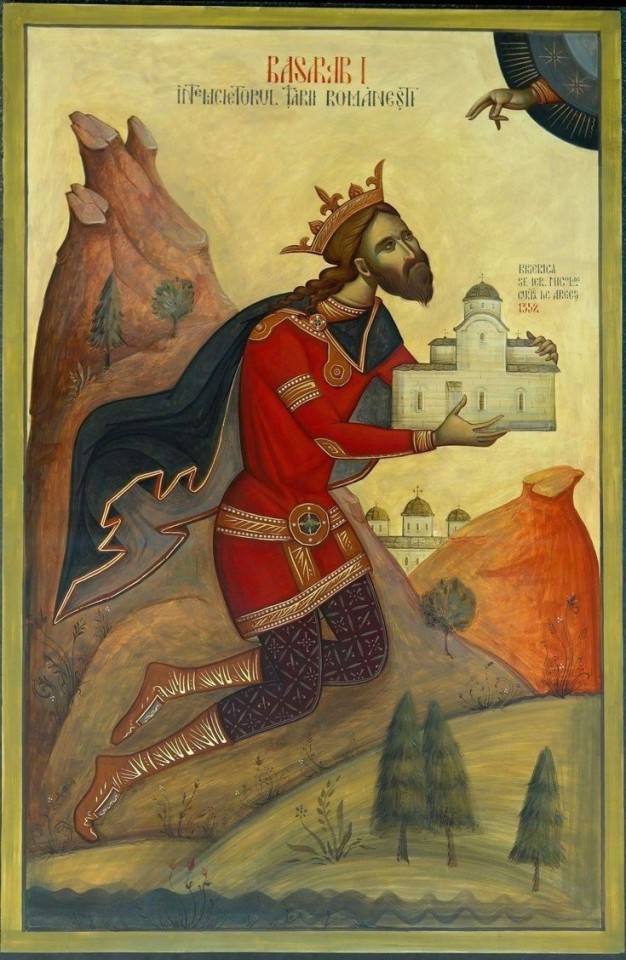
Basarab I of Wallachia (c. 1270-1351/52).
#balkan#wallachia#principality of wallachia#basarab i#basarab the founder#Basarab Întemeietorul#voivode of wallachia#house of basarab#hospodar of wallachia#royalty#kingdom of romania#Regatul României
9 notes
·
View notes
Text
Hello there,
Today I finished watching BBC’s Dracula and I wasn’t satisfied with the ending I came up with an alternate ending. Please tell me if you liked to read a fan fiction about it!
Because everybody was comparing Dracula to Lucifer I thought about connecting those two series. So my idea was that:
WARNING! SPOILERS FOR LUCIFER AND DRACULA!!! At the very end Dracula does bite Zoe, but he doesn’t die immediately, she does. In fact, he dies as a mortal human would die. Dracula has to hide, so he quickly uses he’s new ID, given by Renfield, and as Dracula Impaler he flies to Los Angeles. Of course, he has his money, so he decides to buy a nice penthouse flat. In a short time he actually gets used to his new life. But something changes. He no more wants to kill innocent people. What he does is to find the wanted criminals and drink their blood. Unfortunately that also means being able to see their crimes but Dracula got used to it. Meanwhile, at LA Police Department Chloe gets a report about a person who kills wanted criminals but in a very interesting way which reminds her of a vampire. She thinks it’s ridiculous but Lucifer doesn’t share her attitude. However, he doesn’t want to tell the Detective anything. Actually after meeting his Father and somehow sorting out things with his family he didn’t want to expose her to any other danger. Chloe starts the investigation which eventually leads her to the mysterious man named Dracula Impaler. What she notices about him is that he has a very original name and appearance which reminds her of somebody. Lucifer at the same time has a serious talk with his Father. Quickly Dracula is held by the police and took to the station. He’s being interviewed. Chloe searches his belongings and finds a photo of Agatha van Helsing but when she asks about her Dracula gets very mad and refuses to say anything. He also gets to know Ella Lopez who appears to him as an incredible persona. Ella (being attracted to the bad guys) starts to develop a relationship with him. Even though he’s locked up in a cell. ‘In fact he killed the bad guys, so he is can’t be the one blamed’ she says to Chloe knows what is happening but tries not to comment. After two days the guards notice that the suspect doesn’t eat. They report it to Chloe who is still looking for clues. So she sends Ella to talk to Dracula. Lopez uses that opportunity and sets him free. On his way to the exit he bumps into Lucifer and their l eyes meet. Their real eyes. Dracula quickly leaves the station. When Chloe finds out about Dracula’s escape she is mad at Ella, but she tries to stay calm. Lucifer in fact also tells her that it is better for all of them. But the Detective can’t just give up the case. Also, she starts to ask questions about the mysterious man who turned out to be Lucifer’s object of interest. They meet the same day at his penthouse and Chloe again asks question. ‘Do you know him?’ Lucifer doesn’t replay which is tantamount to the answer ‘yes’. That same night he tells her the truth. Meanwhile, Dracula meets with Ella. Accidentally while he is running and she is cycling home. She stops near him and says ‘hi’. After a second he recognized the Coroner and also greets her. The small talk begins and Ella offers Dracula to drop by for a dinner. It turns out that the only eating person was Ella because Dracula refuses to have anything to eat, but he’s happy to be next to her. When he tells her that he has to go, she offers to put him up. He is hesitant at first but eventually agrees. Unfortunately Ella’s couch is too short for tall Dracula, so she tells him to sleep in her bed which is ridiculous for Dracula. They end up sleeping together... Count is quite uncomfortable at first because he’s never slept in a bed and also without the Transylvanian earth under him. Although the duvets are really soft and fluffy he just can’t close his eyes and enter his ‘sleep mode’. But it changes when he hears Ella’s heartbeat. It somehow calmes him and makes him able to ‘sleep’. The next day he wakes up after Ella which is quite extraordinary for him. He gets up and at the same time he notices how many crosses has Ella in her house. But his real question is why they don’t bother him? Maybe he was focused on Ella so much he didn’t even see them. At the same time Mrs. Lopez is taking a shower. Suddenly Dracula’s phone rings - it’s Chloe. With her knowledge about Dracula she wants him to be cleared from any accusations and that’s why she wants him to arrive at LUX. Dracula leaves Ella house as quiet as he can and first go to his flat so that he is able to dress up properly. He decides to wear very Lucifer elegant clothes. When he arrives at LUX he is welcomed by Mazikeen who leads him upstairs. Inside the penthouse there are already Lucifer, Chloe, Linda, Amenadiel, Dan and God. ‘What is happening here? I thought you wanted to clear my name, detective’ he announces to Chloe who stays silent. ‘And why I don’t feel really friendly towards you?’ he adds pointing at God who only waits for his son to speak up. ‘Vlad’ says Lucifer. ‘What did you call me?’ reacts terrified Dracula. ��You don’t have to hide any more. Everybody here knows about you.’ Lucifer goes closer to Dracula, so they stand exactly opposite each other. ‘Your real name is Vlad the Impaler, you were the hospodar of Wallachia...’ ‘How do you know that? Were you sent by the Harker’s foundation to find me?’ ‘Let me finish’ says Lucifer and carries on. ‘You are the son of Vlad the Devil. Have you ever thought about the accuracy of that nickname?’ Dracula doesn’t replay. ‘He was murdered in 1447. How do I know it?’ Lucifer makes a longer pause and shows him the exact sword with which Vlad the Devil used to fight. ‘What? How?’ Dracula keeps asking. Lucifer doesn’t wait any longer and reveals his true face. ‘I’m your father, Vlad. The Devil.’
3 notes
·
View notes
Photo
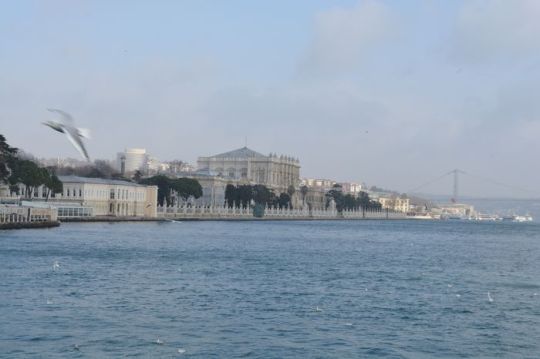
Kaiser William II
The exhibition part is divided into three: the outer garden, the inner garden, and the inner apartments. In the former one can have a fine drive. In it is also to be seen Merassim Palace, which was built for Ii.M. Kaiser William II. and occupied by him during his two visits to Constantinople. (Ho admission to it.) Also the Persian Kiosk, built for the Shah of Persia in 1900, but which he did not occupy, as it was not ready. Visitors are admitted.
The inner garden has a small artificial rivulet on which the Sultan and his wives used to go on canoes and cycle-boats. (Visitors can make use of these boats.)
The Kiosk Djihan Kouma is worth a visit for its magnificent view and the large telescope, which visitors can use. The immense collection of pigeons is worth an inspection for both the variety and number.
Tsit Kiosk, a low and unpretending building where the Sultan used to receive foreign ambassadors in audience. In the large sitting- room a secret door is shown in the wall through which the Sultan used to unexpectedly appear or disappear.
The small mosque, in [Renaissance style, standing just outside Yildiz grounds, is Hamidieh Mosque, at which Sultan Hamid invariably attended prayers every Friday.
Orta Keui, the next stopping-place, a large village bisected by a stream, is the ancient Byzantine village of St. Phocas, so called from the monastery and church which formerly stood here, but of which the latter alone remains. The lower part of the village is inhabited by Jews, and the upper part by Armenians and a few Greeks. The Orta Keui market-gardens are said to grow the best fruit and flowers sold in Constantinople market. The large Yeni Yalideh Mosque, jutting out into the sea, near the landing-stage, was built by Sultan Abd-ul-Aziz’s mother, and is the one which that Sultan usually attended. Many of the large wooden houses along the shore are the Yalls or water-side residences of ministers of state, pashas, and other dignitaries.
Kuru Cheshmeh, the next station, was a little more than a century ago the residence of the Hospodars of Wallachia and their descendants; but now is a wretched village inhabited by Jews, Armenians, and a few Greeks. No vestige now remains of the legendary laurel-tree formerly in this village, which is said to have been planted by Medea when she came here with the Argonauts.
0 notes
Photo
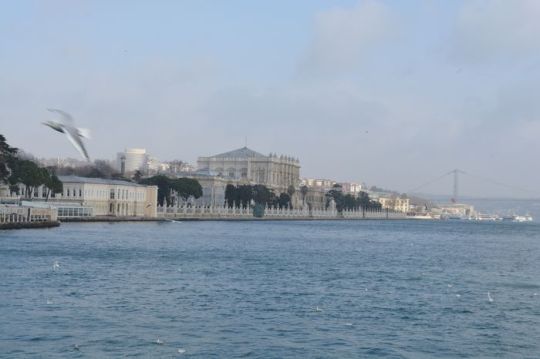
Kaiser William II
The exhibition part is divided into three: the outer garden, the inner garden, and the inner apartments. In the former one can have a fine drive. In it is also to be seen Merassim Palace, which was built for Ii.M. Kaiser William II. and occupied by him during his two visits to Constantinople. (Ho admission to it.) Also the Persian Kiosk, built for the Shah of Persia in 1900, but which he did not occupy, as it was not ready. Visitors are admitted.
The inner garden has a small artificial rivulet on which the Sultan and his wives used to go on canoes and cycle-boats. (Visitors can make use of these boats.)
The Kiosk Djihan Kouma is worth a visit for its magnificent view and the large telescope, which visitors can use. The immense collection of pigeons is worth an inspection for both the variety and number.
Tsit Kiosk, a low and unpretending building where the Sultan used to receive foreign ambassadors in audience. In the large sitting- room a secret door is shown in the wall through which the Sultan used to unexpectedly appear or disappear.
The small mosque, in [Renaissance style, standing just outside Yildiz grounds, is Hamidieh Mosque, at which Sultan Hamid invariably attended prayers every Friday.
Orta Keui, the next stopping-place, a large village bisected by a stream, is the ancient Byzantine village of St. Phocas, so called from the monastery and church which formerly stood here, but of which the latter alone remains. The lower part of the village is inhabited by Jews, and the upper part by Armenians and a few Greeks. The Orta Keui market-gardens are said to grow the best fruit and flowers sold in Constantinople market. The large Yeni Yalideh Mosque, jutting out into the sea, near the landing-stage, was built by Sultan Abd-ul-Aziz’s mother, and is the one which that Sultan usually attended. Many of the large wooden houses along the shore are the Yalls or water-side residences of ministers of state, pashas, and other dignitaries.
Kuru Cheshmeh, the next station, was a little more than a century ago the residence of the Hospodars of Wallachia and their descendants; but now is a wretched village inhabited by Jews, Armenians, and a few Greeks. No vestige now remains of the legendary laurel-tree formerly in this village, which is said to have been planted by Medea when she came here with the Argonauts.
0 notes
Photo
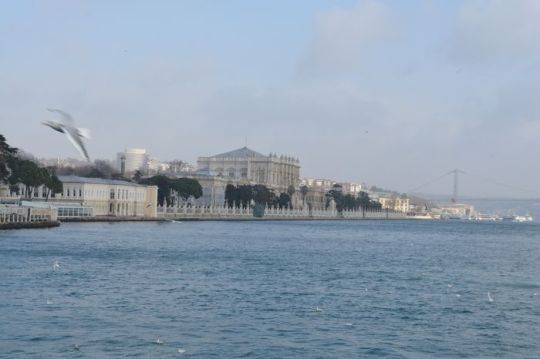
Kaiser William II
The exhibition part is divided into three: the outer garden, the inner garden, and the inner apartments. In the former one can have a fine drive. In it is also to be seen Merassim Palace, which was built for Ii.M. Kaiser William II. and occupied by him during his two visits to Constantinople. (Ho admission to it.) Also the Persian Kiosk, built for the Shah of Persia in 1900, but which he did not occupy, as it was not ready. Visitors are admitted.
The inner garden has a small artificial rivulet on which the Sultan and his wives used to go on canoes and cycle-boats. (Visitors can make use of these boats.)
The Kiosk Djihan Kouma is worth a visit for its magnificent view and the large telescope, which visitors can use. The immense collection of pigeons is worth an inspection for both the variety and number.
Tsit Kiosk, a low and unpretending building where the Sultan used to receive foreign ambassadors in audience. In the large sitting- room a secret door is shown in the wall through which the Sultan used to unexpectedly appear or disappear.
The small mosque, in [Renaissance style, standing just outside Yildiz grounds, is Hamidieh Mosque, at which Sultan Hamid invariably attended prayers every Friday.
Orta Keui, the next stopping-place, a large village bisected by a stream, is the ancient Byzantine village of St. Phocas, so called from the monastery and church which formerly stood here, but of which the latter alone remains. The lower part of the village is inhabited by Jews, and the upper part by Armenians and a few Greeks. The Orta Keui market-gardens are said to grow the best fruit and flowers sold in Constantinople market. The large Yeni Yalideh Mosque, jutting out into the sea, near the landing-stage, was built by Sultan Abd-ul-Aziz’s mother, and is the one which that Sultan usually attended. Many of the large wooden houses along the shore are the Yalls or water-side residences of ministers of state, pashas, and other dignitaries.
Kuru Cheshmeh, the next station, was a little more than a century ago the residence of the Hospodars of Wallachia and their descendants; but now is a wretched village inhabited by Jews, Armenians, and a few Greeks. No vestige now remains of the legendary laurel-tree formerly in this village, which is said to have been planted by Medea when she came here with the Argonauts.
0 notes
Photo
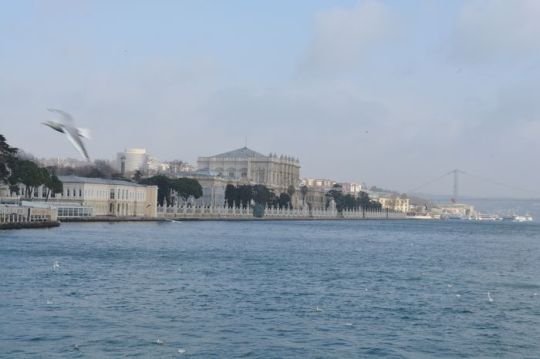
Kaiser William II
The exhibition part is divided into three: the outer garden, the inner garden, and the inner apartments. In the former one can have a fine drive. In it is also to be seen Merassim Palace, which was built for Ii.M. Kaiser William II. and occupied by him during his two visits to Constantinople. (Ho admission to it.) Also the Persian Kiosk, built for the Shah of Persia in 1900, but which he did not occupy, as it was not ready. Visitors are admitted.
The inner garden has a small artificial rivulet on which the Sultan and his wives used to go on canoes and cycle-boats. (Visitors can make use of these boats.)
The Kiosk Djihan Kouma is worth a visit for its magnificent view and the large telescope, which visitors can use. The immense collection of pigeons is worth an inspection for both the variety and number.
Tsit Kiosk, a low and unpretending building where the Sultan used to receive foreign ambassadors in audience. In the large sitting- room a secret door is shown in the wall through which the Sultan used to unexpectedly appear or disappear.
The small mosque, in [Renaissance style, standing just outside Yildiz grounds, is Hamidieh Mosque, at which Sultan Hamid invariably attended prayers every Friday.
Orta Keui, the next stopping-place, a large village bisected by a stream, is the ancient Byzantine village of St. Phocas, so called from the monastery and church which formerly stood here, but of which the latter alone remains. The lower part of the village is inhabited by Jews, and the upper part by Armenians and a few Greeks. The Orta Keui market-gardens are said to grow the best fruit and flowers sold in Constantinople market. The large Yeni Yalideh Mosque, jutting out into the sea, near the landing-stage, was built by Sultan Abd-ul-Aziz’s mother, and is the one which that Sultan usually attended. Many of the large wooden houses along the shore are the Yalls or water-side residences of ministers of state, pashas, and other dignitaries.
Kuru Cheshmeh, the next station, was a little more than a century ago the residence of the Hospodars of Wallachia and their descendants; but now is a wretched village inhabited by Jews, Armenians, and a few Greeks. No vestige now remains of the legendary laurel-tree formerly in this village, which is said to have been planted by Medea when she came here with the Argonauts.
0 notes
Photo
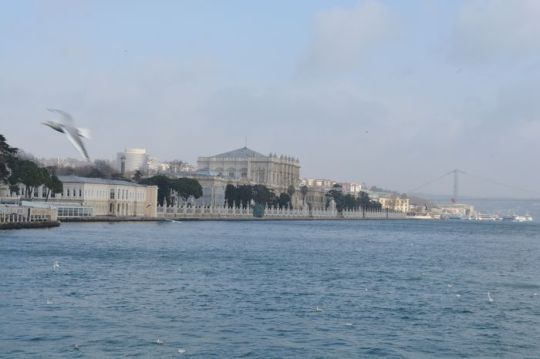
Kaiser William II
The exhibition part is divided into three: the outer garden, the inner garden, and the inner apartments. In the former one can have a fine drive. In it is also to be seen Merassim Palace, which was built for Ii.M. Kaiser William II. and occupied by him during his two visits to Constantinople. (Ho admission to it.) Also the Persian Kiosk, built for the Shah of Persia in 1900, but which he did not occupy, as it was not ready. Visitors are admitted.
The inner garden has a small artificial rivulet on which the Sultan and his wives used to go on canoes and cycle-boats. (Visitors can make use of these boats.)
The Kiosk Djihan Kouma is worth a visit for its magnificent view and the large telescope, which visitors can use. The immense collection of pigeons is worth an inspection for both the variety and number.
Tsit Kiosk, a low and unpretending building where the Sultan used to receive foreign ambassadors in audience. In the large sitting- room a secret door is shown in the wall through which the Sultan used to unexpectedly appear or disappear.
The small mosque, in [Renaissance style, standing just outside Yildiz grounds, is Hamidieh Mosque, at which Sultan Hamid invariably attended prayers every Friday.
Orta Keui, the next stopping-place, a large village bisected by a stream, is the ancient Byzantine village of St. Phocas, so called from the monastery and church which formerly stood here, but of which the latter alone remains. The lower part of the village is inhabited by Jews, and the upper part by Armenians and a few Greeks. The Orta Keui market-gardens are said to grow the best fruit and flowers sold in Constantinople market. The large Yeni Yalideh Mosque, jutting out into the sea, near the landing-stage, was built by Sultan Abd-ul-Aziz’s mother, and is the one which that Sultan usually attended. Many of the large wooden houses along the shore are the Yalls or water-side residences of ministers of state, pashas, and other dignitaries.
Kuru Cheshmeh, the next station, was a little more than a century ago the residence of the Hospodars of Wallachia and their descendants; but now is a wretched village inhabited by Jews, Armenians, and a few Greeks. No vestige now remains of the legendary laurel-tree formerly in this village, which is said to have been planted by Medea when she came here with the Argonauts.
0 notes
Photo
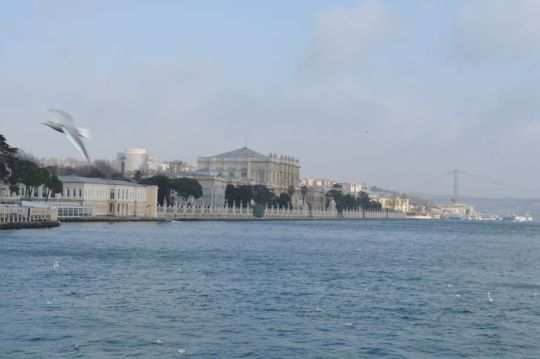
Kaiser William II
The exhibition part is divided into three: the outer garden, the inner garden, and the inner apartments. In the former one can have a fine drive. In it is also to be seen Merassim Palace, which was built for Ii.M. Kaiser William II. and occupied by him during his two visits to Constantinople. (Ho admission to it.) Also the Persian Kiosk, built for the Shah of Persia in 1900, but which he did not occupy, as it was not ready. Visitors are admitted.
The inner garden has a small artificial rivulet on which the Sultan and his wives used to go on canoes and cycle-boats. (Visitors can make use of these boats.)
The Kiosk Djihan Kouma is worth a visit for its magnificent view and the large telescope, which visitors can use. The immense collection of pigeons is worth an inspection for both the variety and number.
Tsit Kiosk, a low and unpretending building where the Sultan used to receive foreign ambassadors in audience. In the large sitting- room a secret door is shown in the wall through which the Sultan used to unexpectedly appear or disappear.
The small mosque, in [Renaissance style, standing just outside Yildiz grounds, is Hamidieh Mosque, at which Sultan Hamid invariably attended prayers every Friday.
Orta Keui, the next stopping-place, a large village bisected by a stream, is the ancient Byzantine village of St. Phocas, so called from the monastery and church which formerly stood here, but of which the latter alone remains. The lower part of the village is inhabited by Jews, and the upper part by Armenians and a few Greeks. The Orta Keui market-gardens are said to grow the best fruit and flowers sold in Constantinople market. The large Yeni Yalideh Mosque, jutting out into the sea, near the landing-stage, was built by Sultan Abd-ul-Aziz’s mother, and is the one which that Sultan usually attended. Many of the large wooden houses along the shore are the Yalls or water-side residences of ministers of state, pashas, and other dignitaries.
Kuru Cheshmeh, the next station, was a little more than a century ago the residence of the Hospodars of Wallachia and their descendants; but now is a wretched village inhabited by Jews, Armenians, and a few Greeks. No vestige now remains of the legendary laurel-tree formerly in this village, which is said to have been planted by Medea when she came here with the Argonauts.
0 notes
Photo

European statesmen still believed
The Powers, however, who in those days were hostile to Russia—I am now speaking of the era which succeeded the Crimean War, the era when European statesmen still believed in the pos-sible regeneration of Turkey in Europe—attached special importance to limiting this autonomy so as to hinder the provinces of the Ottoman Empire lying north of the Danube, which were then deemed certain to be mere outposts of Russia, from endangering the safety of the Ottoman Empire. Any one who takes the trouble to search through the well-nigh forgotten records of this bygone era, so near if measured by time, so far away if measured by events, will find that at this period all the efforts of Western diplomacy were exerted to preclude the possibility of the two Danubian provinces being united into one common State.
By the Treaty which secured their autonomy. x was zmvzdcd that Moldavia and Wallachia. while they had die right, subject to the MTiczica cf the Saltan, to nominate their own Hospccars, different Kcscodars. This arrangement was deemed at the time a signal achievement of British diplomacy under Lord Palmerston, in the same way as the severance of Bulgaria from Eastern Roumelia was craned a brilliant Beaconsfield at the Congress of Berlin. Both achievements proved equally ineffectual and equally short-lived. There is no need here to go into the confused and obscure narrative of the rivalry between the Gn fleas and the Stourdzas. It is enough to say that, when the Hospodar- ship of one of the two provinces became vacant by the deposition of its ruler, the Hospodar of the sister-province was forthwith elected to his place by popular acclamation.
Protect the titular sovereignty
Once more diplomacy, ignoring the plain, hard fact that there is no half-way house between autonomy and independence, made vain efforts to protect the titular sovereignty of Turkey over Bulgaria A compromise was devised, in virtue of which the native Hospodar gave in his resignation, while Moldavia and Wallachia were transformed into the Principality of Koumania, under the rule of a foreign Prince, the Prince in question being a cadet of the Hohcnzollern family. It was, I believe, on the occasion of the selection of Prince Charles of Hohenzollem that the great Chancellor delivered his famous remark, that, “after all, the mere fact of having once been a reigning sovereign will always furnish a pleasant recollection to your Highness“
0 notes
Photo

European statesmen still believed
The Powers, however, who in those days were hostile to Russia—I am now speaking of the era which succeeded the Crimean War, the era when European statesmen still believed in the pos-sible regeneration of Turkey in Europe—attached special importance to limiting this autonomy so as to hinder the provinces of the Ottoman Empire lying north of the Danube, which were then deemed certain to be mere outposts of Russia, from endangering the safety of the Ottoman Empire. Any one who takes the trouble to search through the well-nigh forgotten records of this bygone era, so near if measured by time, so far away if measured by events, will find that at this period all the efforts of Western diplomacy were exerted to preclude the possibility of the two Danubian provinces being united into one common State.
By the Treaty which secured their autonomy. x was zmvzdcd that Moldavia and Wallachia. while they had die right, subject to the MTiczica cf the Saltan, to nominate their own Hospccars, different Kcscodars. This arrangement was deemed at the time a signal achievement of British diplomacy under Lord Palmerston, in the same way as the severance of Bulgaria from Eastern Roumelia was craned a brilliant Beaconsfield at the Congress of Berlin. Both achievements proved equally ineffectual and equally short-lived. There is no need here to go into the confused and obscure narrative of the rivalry between the Gn fleas and the Stourdzas. It is enough to say that, when the Hospodar- ship of one of the two provinces became vacant by the deposition of its ruler, the Hospodar of the sister-province was forthwith elected to his place by popular acclamation.
Protect the titular sovereignty
Once more diplomacy, ignoring the plain, hard fact that there is no half-way house between autonomy and independence, made vain efforts to protect the titular sovereignty of Turkey over Bulgaria A compromise was devised, in virtue of which the native Hospodar gave in his resignation, while Moldavia and Wallachia were transformed into the Principality of Koumania, under the rule of a foreign Prince, the Prince in question being a cadet of the Hohcnzollern family. It was, I believe, on the occasion of the selection of Prince Charles of Hohenzollem that the great Chancellor delivered his famous remark, that, “after all, the mere fact of having once been a reigning sovereign will always furnish a pleasant recollection to your Highness“
0 notes
Photo

European statesmen still believed
The Powers, however, who in those days were hostile to Russia—I am now speaking of the era which succeeded the Crimean War, the era when European statesmen still believed in the pos-sible regeneration of Turkey in Europe—attached special importance to limiting this autonomy so as to hinder the provinces of the Ottoman Empire lying north of the Danube, which were then deemed certain to be mere outposts of Russia, from endangering the safety of the Ottoman Empire. Any one who takes the trouble to search through the well-nigh forgotten records of this bygone era, so near if measured by time, so far away if measured by events, will find that at this period all the efforts of Western diplomacy were exerted to preclude the possibility of the two Danubian provinces being united into one common State.
By the Treaty which secured their autonomy. x was zmvzdcd that Moldavia and Wallachia. while they had die right, subject to the MTiczica cf the Saltan, to nominate their own Hospccars, different Kcscodars. This arrangement was deemed at the time a signal achievement of British diplomacy under Lord Palmerston, in the same way as the severance of Bulgaria from Eastern Roumelia was craned a brilliant Beaconsfield at the Congress of Berlin. Both achievements proved equally ineffectual and equally short-lived. There is no need here to go into the confused and obscure narrative of the rivalry between the Gn fleas and the Stourdzas. It is enough to say that, when the Hospodar- ship of one of the two provinces became vacant by the deposition of its ruler, the Hospodar of the sister-province was forthwith elected to his place by popular acclamation.
Protect the titular sovereignty
Once more diplomacy, ignoring the plain, hard fact that there is no half-way house between autonomy and independence, made vain efforts to protect the titular sovereignty of Turkey over Bulgaria A compromise was devised, in virtue of which the native Hospodar gave in his resignation, while Moldavia and Wallachia were transformed into the Principality of Koumania, under the rule of a foreign Prince, the Prince in question being a cadet of the Hohcnzollern family. It was, I believe, on the occasion of the selection of Prince Charles of Hohenzollem that the great Chancellor delivered his famous remark, that, “after all, the mere fact of having once been a reigning sovereign will always furnish a pleasant recollection to your Highness“
0 notes
Photo

European statesmen still believed
The Powers, however, who in those days were hostile to Russia—I am now speaking of the era which succeeded the Crimean War, the era when European statesmen still believed in the pos-sible regeneration of Turkey in Europe—attached special importance to limiting this autonomy so as to hinder the provinces of the Ottoman Empire lying north of the Danube, which were then deemed certain to be mere outposts of Russia, from endangering the safety of the Ottoman Empire. Any one who takes the trouble to search through the well-nigh forgotten records of this bygone era, so near if measured by time, so far away if measured by events, will find that at this period all the efforts of Western diplomacy were exerted to preclude the possibility of the two Danubian provinces being united into one common State.
By the Treaty which secured their autonomy. x was zmvzdcd that Moldavia and Wallachia. while they had die right, subject to the MTiczica cf the Saltan, to nominate their own Hospccars, different Kcscodars. This arrangement was deemed at the time a signal achievement of British diplomacy under Lord Palmerston, in the same way as the severance of Bulgaria from Eastern Roumelia was craned a brilliant Beaconsfield at the Congress of Berlin. Both achievements proved equally ineffectual and equally short-lived. There is no need here to go into the confused and obscure narrative of the rivalry between the Gn fleas and the Stourdzas. It is enough to say that, when the Hospodar- ship of one of the two provinces became vacant by the deposition of its ruler, the Hospodar of the sister-province was forthwith elected to his place by popular acclamation.
Protect the titular sovereignty
Once more diplomacy, ignoring the plain, hard fact that there is no half-way house between autonomy and independence, made vain efforts to protect the titular sovereignty of Turkey over Bulgaria A compromise was devised, in virtue of which the native Hospodar gave in his resignation, while Moldavia and Wallachia were transformed into the Principality of Koumania, under the rule of a foreign Prince, the Prince in question being a cadet of the Hohcnzollern family. It was, I believe, on the occasion of the selection of Prince Charles of Hohenzollem that the great Chancellor delivered his famous remark, that, “after all, the mere fact of having once been a reigning sovereign will always furnish a pleasant recollection to your Highness“
0 notes
Photo

European statesmen still believed
The Powers, however, who in those days were hostile to Russia—I am now speaking of the era which succeeded the Crimean War, the era when European statesmen still believed in the pos-sible regeneration of Turkey in Europe—attached special importance to limiting this autonomy so as to hinder the provinces of the Ottoman Empire lying north of the Danube, which were then deemed certain to be mere outposts of Russia, from endangering the safety of the Ottoman Empire. Any one who takes the trouble to search through the well-nigh forgotten records of this bygone era, so near if measured by time, so far away if measured by events, will find that at this period all the efforts of Western diplomacy were exerted to preclude the possibility of the two Danubian provinces being united into one common State.
By the Treaty which secured their autonomy. x was zmvzdcd that Moldavia and Wallachia. while they had die right, subject to the MTiczica cf the Saltan, to nominate their own Hospccars, different Kcscodars. This arrangement was deemed at the time a signal achievement of British diplomacy under Lord Palmerston, in the same way as the severance of Bulgaria from Eastern Roumelia was craned a brilliant Beaconsfield at the Congress of Berlin. Both achievements proved equally ineffectual and equally short-lived. There is no need here to go into the confused and obscure narrative of the rivalry between the Gn fleas and the Stourdzas. It is enough to say that, when the Hospodar- ship of one of the two provinces became vacant by the deposition of its ruler, the Hospodar of the sister-province was forthwith elected to his place by popular acclamation.
Protect the titular sovereignty
Once more diplomacy, ignoring the plain, hard fact that there is no half-way house between autonomy and independence, made vain efforts to protect the titular sovereignty of Turkey over Bulgaria A compromise was devised, in virtue of which the native Hospodar gave in his resignation, while Moldavia and Wallachia were transformed into the Principality of Koumania, under the rule of a foreign Prince, the Prince in question being a cadet of the Hohcnzollern family. It was, I believe, on the occasion of the selection of Prince Charles of Hohenzollem that the great Chancellor delivered his famous remark, that, “after all, the mere fact of having once been a reigning sovereign will always furnish a pleasant recollection to your Highness“
0 notes
Photo

European statesmen still believed
The Powers, however, who in those days were hostile to Russia—I am now speaking of the era which succeeded the Crimean War, the era when European statesmen still believed in the pos-sible regeneration of Turkey in Europe—attached special importance to limiting this autonomy so as to hinder the provinces of the Ottoman Empire lying north of the Danube, which were then deemed certain to be mere outposts of Russia, from endangering the safety of the Ottoman Empire. Any one who takes the trouble to search through the well-nigh forgotten records of this bygone era, so near if measured by time, so far away if measured by events, will find that at this period all the efforts of Western diplomacy were exerted to preclude the possibility of the two Danubian provinces being united into one common State.
By the Treaty which secured their autonomy. x was zmvzdcd that Moldavia and Wallachia. while they had die right, subject to the MTiczica cf the Saltan, to nominate their own Hospccars, different Kcscodars. This arrangement was deemed at the time a signal achievement of British diplomacy under Lord Palmerston, in the same way as the severance of Bulgaria from Eastern Roumelia was craned a brilliant Beaconsfield at the Congress of Berlin. Both achievements proved equally ineffectual and equally short-lived. There is no need here to go into the confused and obscure narrative of the rivalry between the Gn fleas and the Stourdzas. It is enough to say that, when the Hospodar- ship of one of the two provinces became vacant by the deposition of its ruler, the Hospodar of the sister-province was forthwith elected to his place by popular acclamation.
Protect the titular sovereignty
Once more diplomacy, ignoring the plain, hard fact that there is no half-way house between autonomy and independence, made vain efforts to protect the titular sovereignty of Turkey over Bulgaria A compromise was devised, in virtue of which the native Hospodar gave in his resignation, while Moldavia and Wallachia were transformed into the Principality of Koumania, under the rule of a foreign Prince, the Prince in question being a cadet of the Hohcnzollern family. It was, I believe, on the occasion of the selection of Prince Charles of Hohenzollem that the great Chancellor delivered his famous remark, that, “after all, the mere fact of having once been a reigning sovereign will always furnish a pleasant recollection to your Highness“
0 notes
Photo

European statesmen still believed
The Powers, however, who in those days were hostile to Russia—I am now speaking of the era which succeeded the Crimean War, the era when European statesmen still believed in the pos-sible regeneration of Turkey in Europe—attached special importance to limiting this autonomy so as to hinder the provinces of the Ottoman Empire lying north of the Danube, which were then deemed certain to be mere outposts of Russia, from endangering the safety of the Ottoman Empire. Any one who takes the trouble to search through the well-nigh forgotten records of this bygone era, so near if measured by time, so far away if measured by events, will find that at this period all the efforts of Western diplomacy were exerted to preclude the possibility of the two Danubian provinces being united into one common State.
By the Treaty which secured their autonomy. x was zmvzdcd that Moldavia and Wallachia. while they had die right, subject to the MTiczica cf the Saltan, to nominate their own Hospccars, different Kcscodars. This arrangement was deemed at the time a signal achievement of British diplomacy under Lord Palmerston, in the same way as the severance of Bulgaria from Eastern Roumelia was craned a brilliant Beaconsfield at the Congress of Berlin. Both achievements proved equally ineffectual and equally short-lived. There is no need here to go into the confused and obscure narrative of the rivalry between the Gn fleas and the Stourdzas. It is enough to say that, when the Hospodar- ship of one of the two provinces became vacant by the deposition of its ruler, the Hospodar of the sister-province was forthwith elected to his place by popular acclamation.
Protect the titular sovereignty
Once more diplomacy, ignoring the plain, hard fact that there is no half-way house between autonomy and independence, made vain efforts to protect the titular sovereignty of Turkey over Bulgaria A compromise was devised, in virtue of which the native Hospodar gave in his resignation, while Moldavia and Wallachia were transformed into the Principality of Koumania, under the rule of a foreign Prince, the Prince in question being a cadet of the Hohcnzollern family. It was, I believe, on the occasion of the selection of Prince Charles of Hohenzollem that the great Chancellor delivered his famous remark, that, “after all, the mere fact of having once been a reigning sovereign will always furnish a pleasant recollection to your Highness“
0 notes
Photo

European statesmen still believed
The Powers, however, who in those days were hostile to Russia—I am now speaking of the era which succeeded the Crimean War, the era when European statesmen still believed in the pos-sible regeneration of Turkey in Europe—attached special importance to limiting this autonomy so as to hinder the provinces of the Ottoman Empire lying north of the Danube, which were then deemed certain to be mere outposts of Russia, from endangering the safety of the Ottoman Empire. Any one who takes the trouble to search through the well-nigh forgotten records of this bygone era, so near if measured by time, so far away if measured by events, will find that at this period all the efforts of Western diplomacy were exerted to preclude the possibility of the two Danubian provinces being united into one common State.
By the Treaty which secured their autonomy. x was zmvzdcd that Moldavia and Wallachia. while they had die right, subject to the MTiczica cf the Saltan, to nominate their own Hospccars, different Kcscodars. This arrangement was deemed at the time a signal achievement of British diplomacy under Lord Palmerston, in the same way as the severance of Bulgaria from Eastern Roumelia was craned a brilliant Beaconsfield at the Congress of Berlin. Both achievements proved equally ineffectual and equally short-lived. There is no need here to go into the confused and obscure narrative of the rivalry between the Gn fleas and the Stourdzas. It is enough to say that, when the Hospodar- ship of one of the two provinces became vacant by the deposition of its ruler, the Hospodar of the sister-province was forthwith elected to his place by popular acclamation.
Protect the titular sovereignty
Once more diplomacy, ignoring the plain, hard fact that there is no half-way house between autonomy and independence, made vain efforts to protect the titular sovereignty of Turkey over Bulgaria A compromise was devised, in virtue of which the native Hospodar gave in his resignation, while Moldavia and Wallachia were transformed into the Principality of Koumania, under the rule of a foreign Prince, the Prince in question being a cadet of the Hohcnzollern family. It was, I believe, on the occasion of the selection of Prince Charles of Hohenzollem that the great Chancellor delivered his famous remark, that, “after all, the mere fact of having once been a reigning sovereign will always furnish a pleasant recollection to your Highness“
0 notes